
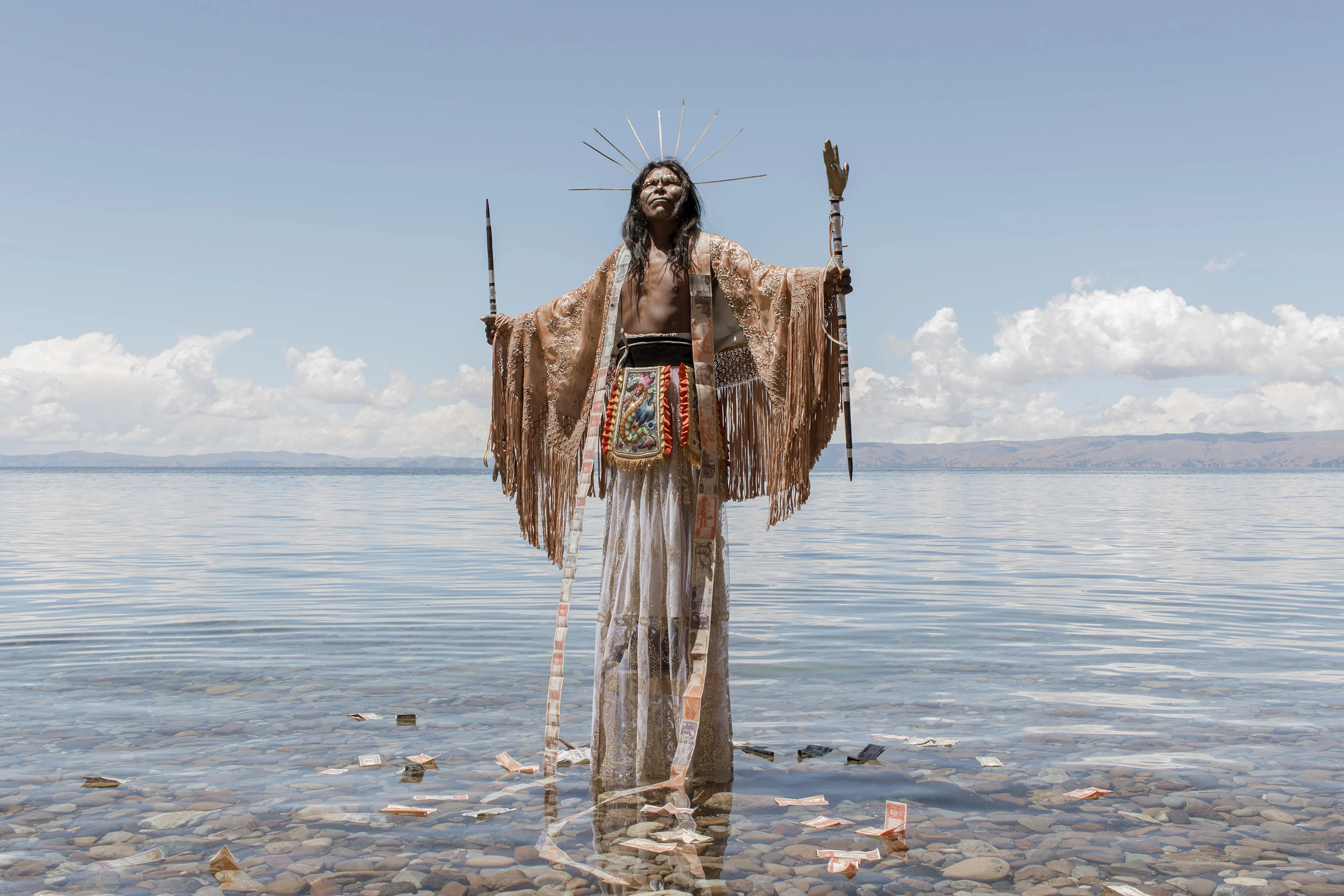
Frustrated by the cliches and stereotypes surrounding Bolivia, photographer River Claure set out to create an alternative, otherworldly vision of his country’s identity; one that takes into account its evolution into the modern world. He tells writer Bruno Bayley that while some Bolivians might relate to the “images of llamas, coca leaves, indigenous peoples, folkloric festivals” that have proliferated, he does not, and that a conversation around the identity of an entire nation can never be quite so simple.

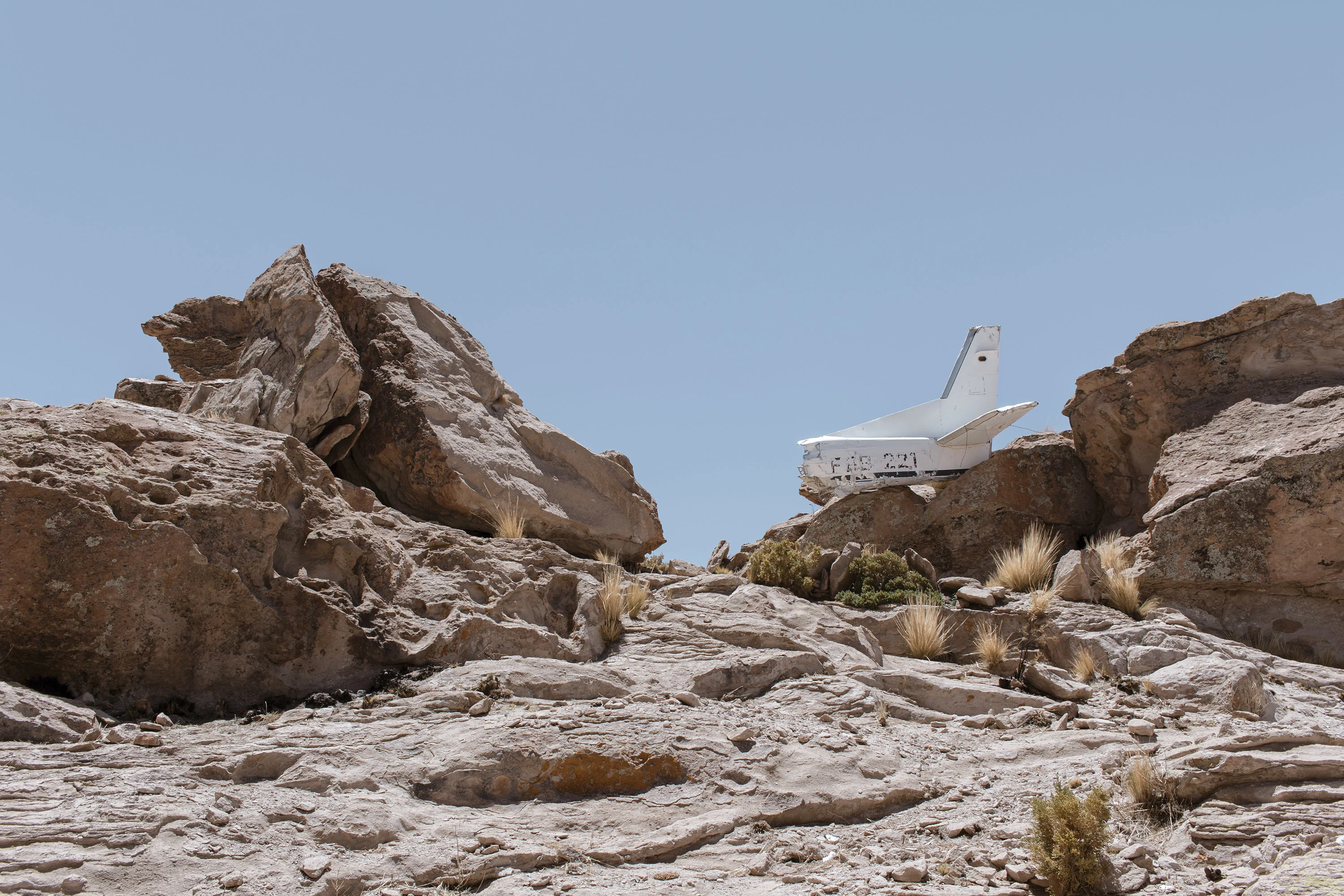
River Claure’s project, “Warawar Wawa” (Son of the Stars), offers an alternative to long-established visual depictions of the Bolivian Andes. “It is about a collective identity that is a result of juxtaposed, mixed cultures,” he says.
Studying performing arts in high school, Claure “began to understand the potential of the image—the allegorical, the poetic—that images can be more questions than answers.” He left Cochabamba, Bolivia, in 2017 to study in Madrid, where he found himself reflecting on his Aymara roots and the elements of Bolivian culture with which he identified, as well as the way in which “the ‘margins’ are observed from Europe.”
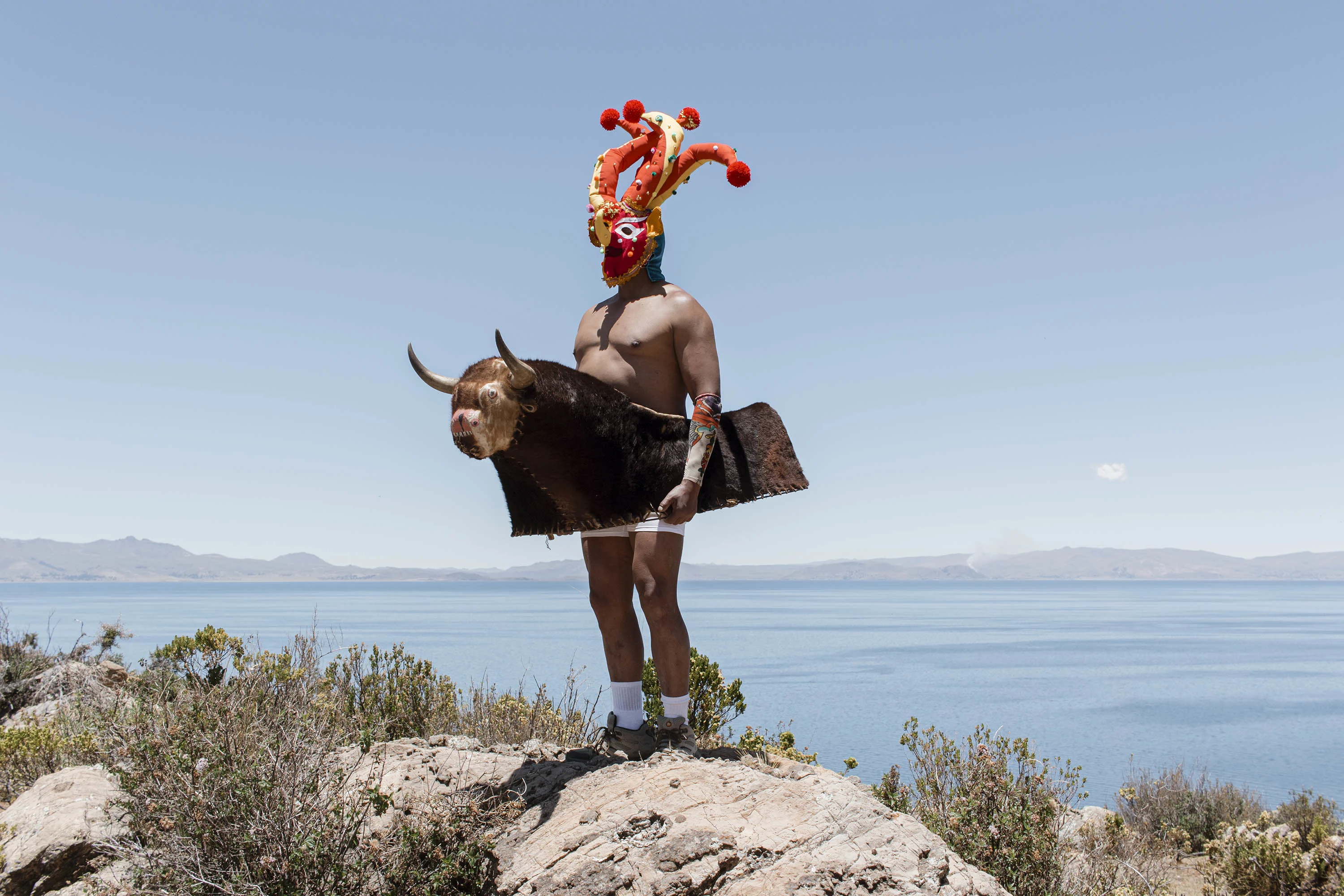
“In the midst of questions about where I belonged, my first impulse was just to imagine a new world,” he explains. “Warawar Wawa” is a vision of that new world. The project replaces cliches and stereotypes with an alternative, multifaceted and complex picture of Bolivian identity. While Claure feels some Bolivians may feel represented, at least in part, by the “images of llamas, coca leaves, indigenous peoples, folkloric festivals” that have proliferated, he says he doesn’t. “That's why I decided to make the conversation more complex. [People] need funnels that simplify collective identities, making them easy to consume. But the truth is more difficult than that. Identity is constructed, it mutates, contradicts itself. Identity is a question, not an answer.”
The work presents a Bolivian’s view of Bolivia. “I cannot explain the identity of the Andes, but I can open the door to a world in which the old and the new, the traditional and the modern, the specific and the global, coexist. It is more powerful to talk about things you know; it is more powerful to talk about things you feel. That is why it’s more effective when people close to subjects can develop them and photograph them.”
Ekeko

The mass-produced sits alongside the ancient in Warawar Wawa, intertwining to create a complex picture of identity. Discussing this multi-layered aspect of the work, Claure uses the Spanish word “abigarrado,” literally translatable as “variegated,” or “mottled.” Claure unpacks the term’s philosophical meaning more carefully, describing it as a multiplicity of contradictory elements that can be combined with an ultimately positive outcome. Pushed to explain abigarrado’s meaning in his own context, he gives the example of a popular restaurant in Cochabamba where he and friends eat a traditional dish of pork and native potatoes, smoke Marlboros, and chat about crypto beneath pictures of the Virgin Mary and a smiling Che Guevara while ABBA plays on the jukebox. “The scene ends when they bring us the beer and before toasting we pour a few drops of beer to the earth, the ‘Challa,’ giving the first sip to mother earth to have her blessing. At the end of the day, I understand abigarrado as a dynamic that enhances things.”
Virgen Cerro

Many of the images in Warawar Wawa are laden with symbolism: the nicknacks of modernity jostling with religious iconography. Claure’s work plays with Christian symbols in particular, partly alluding to Catholicism’s role in Bolivia’s colonial conquest, but more often stressing the multiple layers of understanding and existence in the nation’s identity. Claure makes use of cheap, everyday items, working with local artisans to make sculptural arrangements with multiple meanings. He cites this image, “Virgen Cerro,” as an example of this approach: the figure reflecting the Virgin Mary, but also the Pachamama—the Mother Earth figure in the Aymara culture. “Once again, the abigarrado… I keep going after it.”
Camión
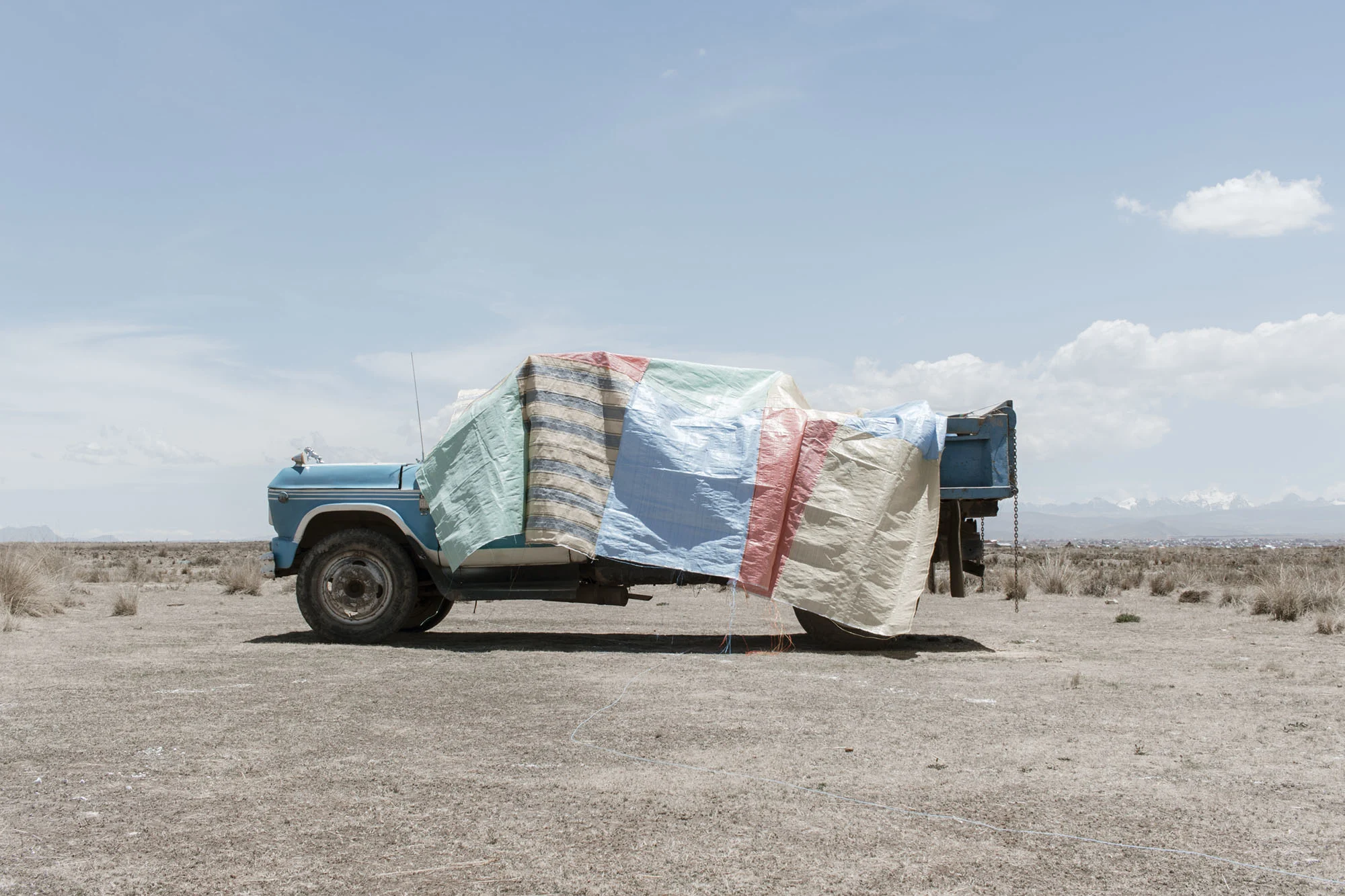
“Ch'ixi” is the Aymara word for the grey shade that emerges when Aymara craftspeople combine or juxtapose two or more weaves—it is an indeterminate, hard-to-define tone. Ch’ixi as a concept plays a large part in Claure’s work; threads of images pointing in different directions, creating a moiree-like grey area where the complexity of Bolivia’s history and present is at the fore, “the indeterminate fruit of juxtaposed cultures.” For Claure the image speaks to the illusion of modernity and the failed promises of technology. The sight of this truck reminded Claure of a video he’d seen of a community rescuing a stranded truck in the valleys near Huancavelica, Peru. “Poetically, for me, these people were pulling the debris of modernity, the lost dreams of an era that has failed us all. The ideals of progress, of capitalism and the ecological problem loaded in this instrument of industry, a simple truck.”
Villa Adela
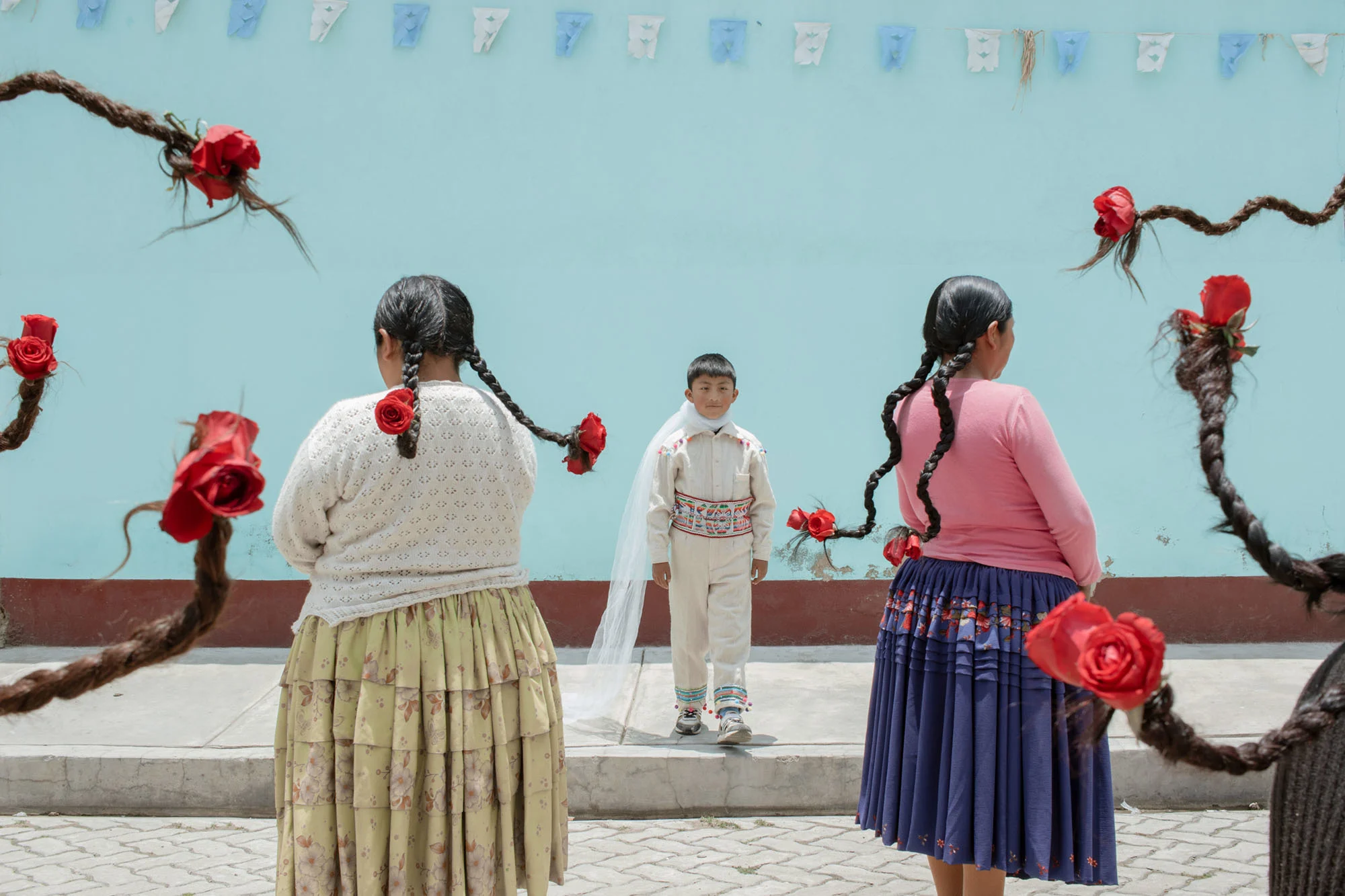
“The figure of the ‘chola’ (a woman of indigenous roots with a skirt) is very complex,” explains Claure. “My grandmother and my great grandmother are cholas; they are people with Aymara as their mother tongue, they still keep their traditional way of dressing. During my adolescence this generated contradictions and sometimes embarrassment. At high school I didn’t like my friends to know that I had strong indigenous roots, because even today that can bring with it discrimination.” Claure says he’s now ashamed of this teenage denial of his roots, and that creating images like this allows him to reconcile with that heritage.
Oveja

During some Aymara festivals livestock are given as gifts, with chosen animals distinguished with a painted marking. Claure smeared this lamb with paint, an exaggeration of the traditional gesture. For Claure the photo is only “a record of the performance.” Once again, the image plays with the tensions and contrasts between Bolivia’s traditional and indigenous life and its more recent christian identity. “The image has invited me to reflect a lot on the ‘stains’ in our identity, the tension with an inhospitable territory.” When showing the image during workshops in remote communities in the Andes Claure has found that many young people think that the sheep will be sacrificed. “I think the image contains some negative emotions, unlike the majority of the project which is so playful and friendly.”
Yatiri

The Andean Yatiri—a traditional healer or wise man—adorned with a VR headset, nods to the ongoing encroachment of modernity and technology on isolated peoples. Claure says people often find the image shocking, perhaps because it clashes with the perception of indigenous communities as “pure,” and with the inclination to consider remote peoples as being intrinsically spiritual, wise, above the influence of cell phones, wi-fi, VR. For Claure the jarring image poses a question: “We always see reality through a pair of glasses, the epistemology. This image makes me think, what would happen if we change the glasses of the wise men in the Andes?”

